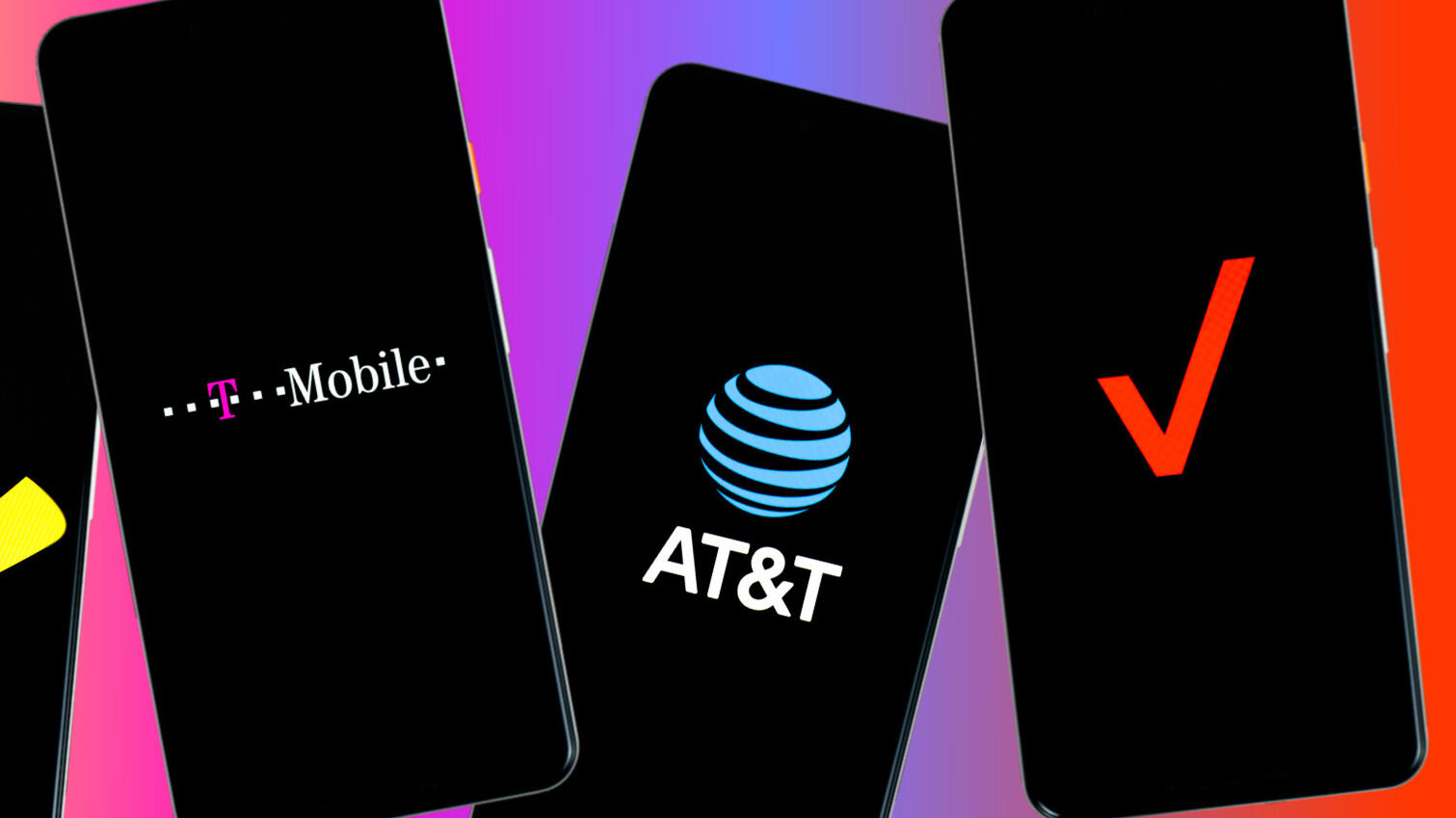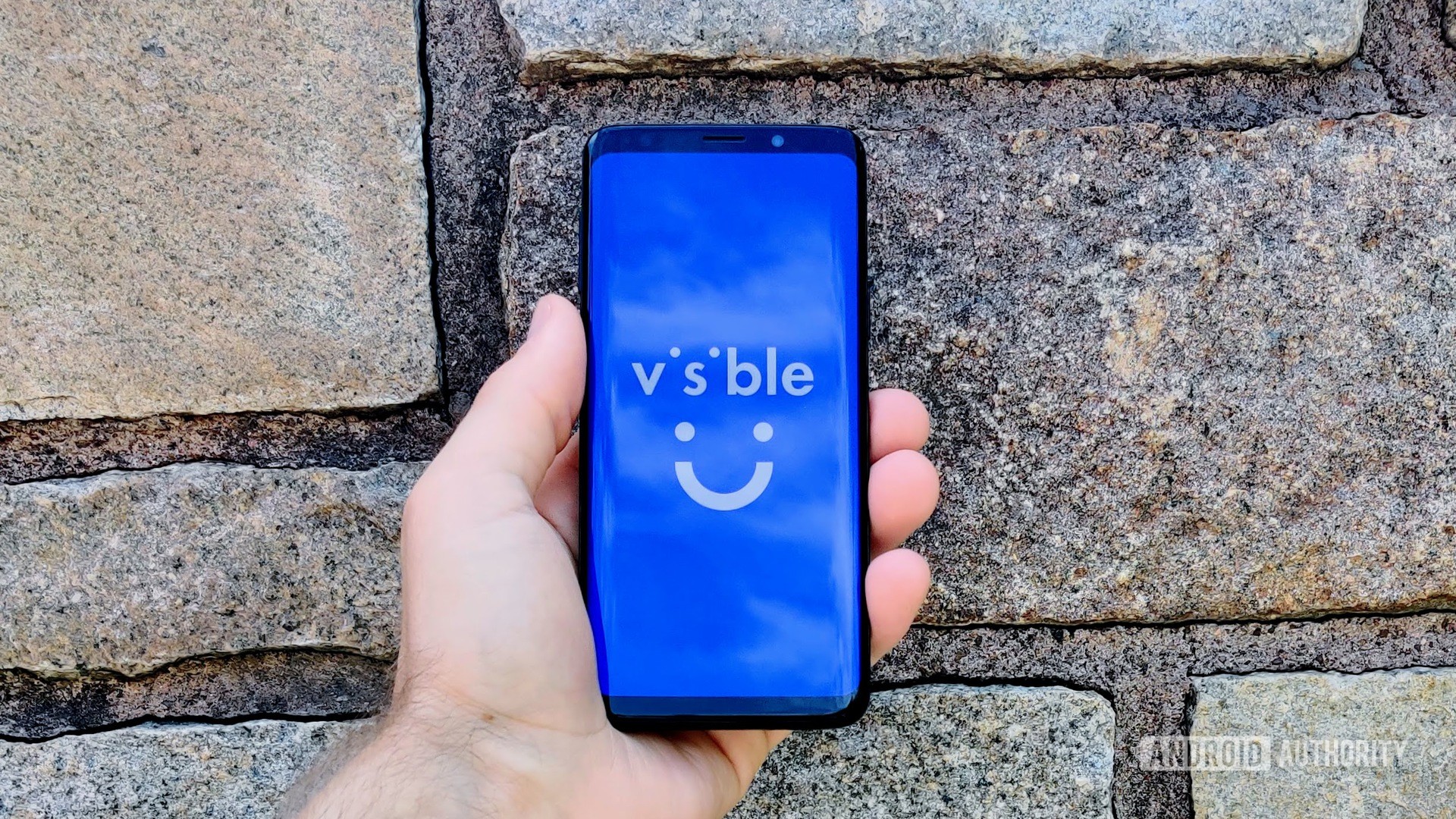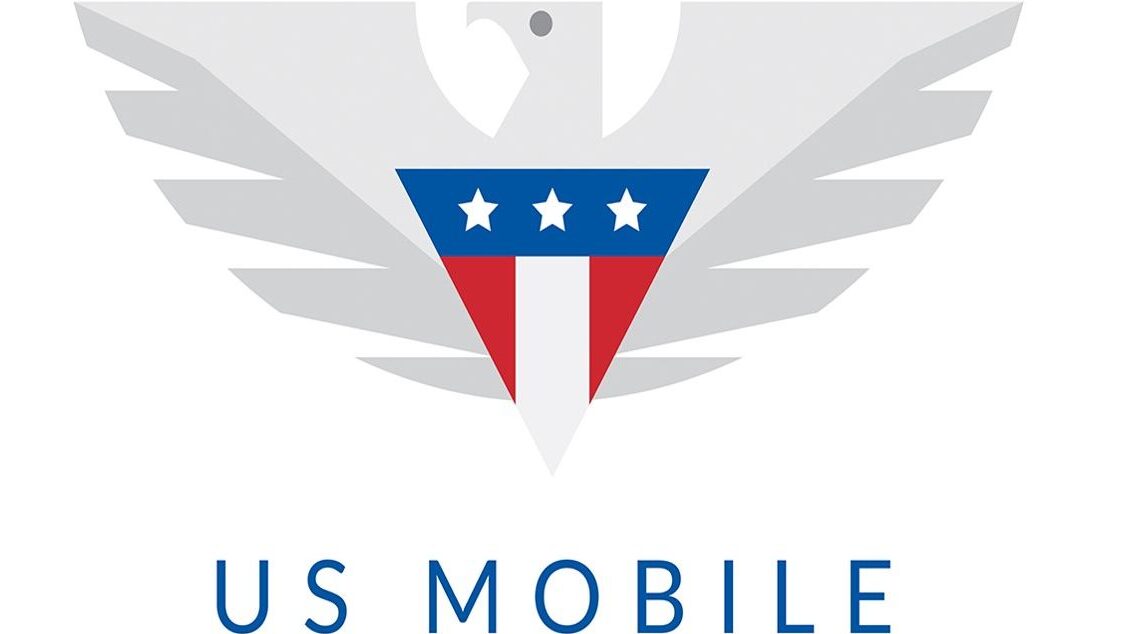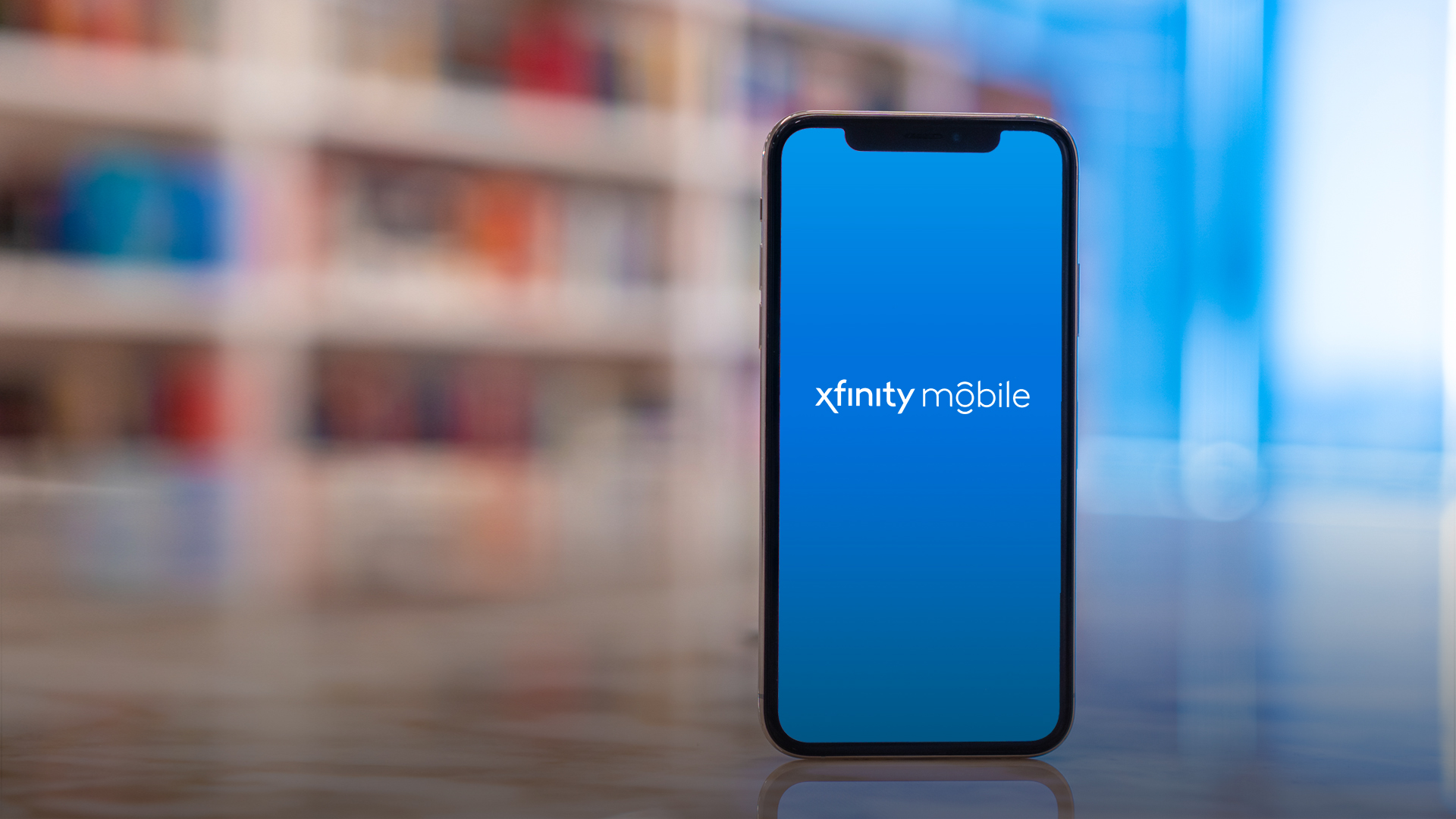Affiliate links on Android Authority may earn us a commission. Learn more.
The best prepaid phone plans of 2023

The last few years have been a real struggle for the economy, leading many of us to make cuts wherever we can, including tightening budgets, cutting unnecessary services, and even switching to cheaper ad-based streaming plans for entertainment. Another area you can really save a lot on is your phone bill. Traditional carriers can get pretty expensive, but plenty of prepaid alternatives can offer substantial savings. Let’s look closer at the best prepaid phones of 2023, what makes them different from traditional carriers, and more buying advice.
Best unlimited prepaid phone plans for single users

You’ll find plenty of options if you’re single or have a teen you don’t want to add to your postpaid plan. Below we take a look at three plans we highly recommend.
Visible Unlimited
- Price: $25 for base plan, $35 for Plus
- Partner network: Verizon
Visible has changed a lot over the years, but one thing remains true: you get actual unlimited data. Almost every other phone plan tends to have limits to how much high speed you get. After you use the allotment, you get throttled down to speeds so slow you can’t use them for anything beyond email. Visible has no cap. It does throttle during congestion, however. Sometimes speeds can get as low as 3-5Mbps during peaks, but I often hit 10-20Mbps in less congested areas or outside peak usage hours. There’s also unlimited hotspot use, though that is capped at 5Mbps.
If you don’t mind slower speeds but want to consume as much data as you want, Visible is still my top recommendation. Currently, you can sign up for a base plan for $25 a month. That’s $5 less than the normal price, though it’s unclear how long the offer will last. There’s also no longer 5G support unless you’re willing to pay $35 a month for the Visible Plus plan.
Learn more about this carrier, its phone selection, and more in our full guide to Visible’s network.
Boost Mobile Unlimited data plan
- Price: $25 for base plan, $35 for Plus
- Partner network(s): T-Mobile, AT&T
Boost Mobile offers an unlimited plan for new users, costing only $25. As with many unlimited plans, there’s some fine print involved. You get 30GB of high-speed data; after that, you can keep using it, but you’ll get slower speeds. When we say slow, we mean it. You’ll get around 512Kbps, which is enough to check email but not much more than this.
Honestly, we’d pick Visible, with its truly unlimited data over this in many cases, but we will note that Boost Mobile tends to have faster speeds (unless you run out of the 30GB allotment). If you care more about quality of the connection over quantity, Boost Mobile Unlimited is a great option.
Learn more about this carrier, its phone selection, and more in our full guide to Boost Mobile’s plans and services.
AT&T Unlimited
- Price: $50 (with autopay discount)
- Partner network: AT&T (duh)
At double the cost of the other two options, AT&T Unlimited isn’t the cheapest, but it is the perfect middle ground. You don’t get Boost Mobile’s 512Kbps speed limit after blowing through your cap. But, unlike Visible, there is technically a soft cap of 50GB.
Once you use up all the data, your speeds will vary significantly based on congestion. Even before then, throttling can happen in extreme congestion, but it’s pretty rare. Still, in most cases, it’ll be much faster than the paltry speeds Boost gives you after using up your high-speed allotment and consistently better than Visible’s own speeds. You might even get close to actual LTE speed during less congested times.
Learn more about this carrier, its plans, its phone selection, and more in our full guide to AT&T.
Best prepaid family phone plans with unlimited data

US Mobile Unlimited Basic
- Price: $80 for 4 lines
- Partner network: Verizon
US Mobile Unlimited Basic starts around $35 a line, but with four lines, the discounts stack up, bringing things down to just $20 per person. For that price, you’ll get 40GB of 5GB of premium data and 5GB of hotspot data.
Like Visible, you’ll get unlimited true data with US Mobile. That means once the premium data runs out, you won’t be forced down to sub-1Mbps speeds like most of the others on this list. Learn more about this carrier’s other plans and phone selection in our full guide to US Mobile.
Google Fi Mobile Simply Unlimited
- Price: $80 for 4 lines
- Partner network: AT&T, US Cellular
Looking for a plan that’s perfect for the family? We highly recommend Google Fi. At $80 for four lines, you’re paying just $20 a line and get unlimited talk, text, data, and even 5GB of mobile hotspot service per line. Even better, you’ll get free roaming in Canada and Mexico.
For international travelers, you can even pay an extra $10/GB for data or get unlimited data if you upgrade to Unlimited Plus coverage. Of course, that plan will cost you an extra $20 per line but adds YouTube Premium for a year, Google One Cloud storage, and a few other small perks.
Learn more about this carrier’s plans and phone selection in our full guide to Google Fi Mobile.
Cricket Unlimited
- Price: $100 for 4 lines
- Partner network: AT&T
Cricket works similarly to the other two family plans here, but it costs a little more at $100 for four lines. Just like Fi, you’ll get unlimited with no official cap, but you could find yourself deprioritized during moments of traffic congestion.
Why would you spend $5 more a line when it’s not much different from the others? Customer service, for one. If you are less tech-savvy, you’ll appreciate the option of visiting a brick-and-mortar Cricket store. Also Cricket also has pretty decent discounts on phones with a variety of new and even pre-owned options that will help you save money.
You can learn more about the AT&T owned network in our full guide to Cricket’s plans and phones.
Best budget prepaid plans

On a tight budget? There are a few really solid options for those with very basic needs. Just be aware these aren’t great fits if you’re really into mobile data. For those that spend most of their time on Wi-Fi? A limited data plan can actually save you a ton.
Tello Economy
- Price: $10 a month
- Partner network: T-Mobile
Don’t have a lot to spend on cellular service? Tello starts at just $10 a month for a single line. You get 1GB of data, unlimited mins, and unlimited texts. While this isn’t much data, it’s perfect for those that mostly stick to Wi-Fi networks and just need a little coverage for those moments when you’re out of Wi-Fi range.
If you run out of data, adding a Pay as You Go data credit to your plan is possible, though rates will vary. Bottom-line Tello is for those that don’t want or need much data or are willing to stick to other networks for most of their data use.
Take a closer look at how Tello compares to rival Cricket in our Tello vs Cricket comparison.
Twigby Talk & Text 1GB
- Price: $5 a month for 3 months ($15 after)
- Partner network: T-Mobile
If you’re looking to get phone service at the absolute cheapest, Twigby is worth a look. You pay just $5 a month for the first three months, after which it goes up to $10. That’s dirt cheap when you consider it offers unlimited talk and text. The downside is you only get 1GB of data. This could be a good plan if you work from home and frequent places with public Wi-Fi. You’ll pay even less for Tello Economy, though!
Use more data than 1GB? 4GB will cost just $10 monthly for the first three months and $20 afterward. From there, the carrier offers up to 7GB but at $25 a month after the introductory rate. Frankly, there are better options if you’re a heavy data user — like Visible.
US Mobile 5GB Plan
- Price: $15
- Partner network: Verizon
US Mobile was previously in our list’s family plan section, but it also offers a really good budget option for single users. You’ll get unlimited talk, text, and 5GB of data for just $15. After you use up your allotment, you’ll only be able to use Wi-Fi to get online. Need more data on the go? You can purchase more at $2 per GB.
Out of the three budget plans here this is probably our favorite. 5GB is a lot for 5GB. Any downsides? Prioritization tends to be the worst with Verizon-based MNVOs. So if you live in a super congested area, you might run into a bit more problems than you would with the other carriers in this section.
What is a prepaid phone plan, and how does it work?
You might be wondering how a prepaid phone plan works. Good question. A prepaid cell phone plan is exactly as it sounds; you pay upfront for each month (or even sometimes for multiple months) of service. If you don’t pay for service in advance, you’ll typically see your service immediately shut down. However, there’s typically a grace period (which varies) where the carrier will keep your number/account paused before it’s too late to turn the service back on.
Many prepaid services are owned or operated by a major wireless network. The rest are MNVOs (Mobile Network Virtual Operator), which is just a fancy way to say they partner with a major network to provide service to you at a discount price. Regardless of who provides the service, prepaid phone plans usually have a few small compromises to keep costs down. The exact sacrifices will vary from plan to plan. Still, they might include fewer extra perks, no roaming or limited roaming, weaker customer service, or even a more limited selection of phones.
Why do major networks partner with these smaller MVNOs in the first place? Basically, a major network has extra bandwidth that it sells to 3rd parties in bulk at a discount. This gives the network some easy, guaranteed money. Then the 3rd party resells the service and is responsible for all marketing, handling customer service, and ensuring compatible phones are on offer.
You can learn more about the differences between prepaid and traditional services in our guide to postpaid vs prepaid services.
What is the best prepaid phone plan?
There is no one fits all solution. That said, if you’re looking for a good every person’s plan that should satisfy most, we’d recommend giving Google Fi or Visible closer looks.
The pros and cons of signing up for a prepaid phone plan

There are many advantages to going prepaid; here are just some of the highlights:
- Save money – Prepaid plans can cost significantly less than traditional carrier plans, despite often using the same network as either Verizon, AT&T, or T-Mobile.
- No credit checks – Most traditional carriers require a credit check, especially to qualify for a free phone or an installment plan. Prepaid carriers have cheaper phones and often aren’t tied to your credit score.
- Switch when you want – No contracts or commitments here! Found a better deal with another carrier? No problem. It’s much easier to switch to another prepaid carrier than it is to say goodbye to your postpaid service.
- There are still plenty of discounts – While prepaid carriers are often thought of as one-line only, that’s not true. There are tons of family and sharing plans out there with prices that only get better and better as you add more lines.
You might be wondering if there are any catches. Well yes, nothing is perfect. Here are a few disadvantages to prepaid:
- Less perks – Carriers like Verizon use incentives like free Disney Plus service to get you in the door. You won’t find nearly as many prepaid options with perks like this. Of course, the savings allow you to buy those ‘added perks’ and still save money. So many this isn’t such a big deal after all?
- Weaker customer service – Prepaid services cut a lot of corners on customer service, though some are better than others. For example, Cricket is a prepaid carrier with brick-and-mortar stores were you can get help. Other carriers have no physical presence or partner with a store like Walmart or Best Buy for in-store sales. You’ll also find many prepaid options that only offer customer service online. Visible is a good example of that.
- Roaming tends to be limited – Postpaid carriers often have extensive partnerships making it possible to connect to the service (often at no extra charge) even if you’re technically not in a covered area. For example, my wife has a Verizon plan still and it often keeps working even after my Visible line has long since lost service — and yet both are using Verizon’s network!
- Throttling and deprioritization – Verizon, AT&T, and T-Mobile will put their postpaid customers first. If you live in a busy cell area, all prepaid services will see some level of deprioritization and throttling during peak usage hours. The cheaper the carrier, the more likely you’ll find throttling can get bad. My Visible line throttles a lot in the city during busy periods, but I live rurally and in towns nearby, it runs flawlessly regardless of the time of the day. When I was using Google Fi, I didn’t have nearly as many problems with throttling, but the service is also more expensive. You get what you pay for.
- Phone options might not be as good – While this will depend on the carrier, some MVNOs and prepaid carriers have better phone selections than others. Thankfully most networks support unlocked phones as long as they are compatible with the network, which can be a good way to save.
Are prepaid carriers worth the trade-offs? Obviously, the answer will be a subjective one, but I can say I don’t regret switching to prepaid. I spend significantly less and have learned how to get around any downsides. The fact I’m a super nerd and don’t need customer service helps too.
If you’re really in doubt? Activate a new number temporarily with the prepaid carrier you’re interested in. Try it for a month while keeping your postpaid account active. Like it? Transfer the number and move on.
Should you consider getting a prepaid phone plan from your cable provider?

More of us are cutting cable, but if you haven’t joined that revolution, you might have considered getting your phone plan through your existing carrier. These are all MVNOs and work similarly to the plans above. Are there any advantages to a cable provider’s phone service? Not really.
While services like Xfinity and Spectrum offer a decent range of plans, none of them differ in price from the networks above. Plus, they require you to keep your cable network to use them, which ties you to the cable provider. The main appeal to prepaid phone plans is supposed to be the freedom it provides to cut ties the minute it’s not working out — so you can see that we don’t necessarily recommend this option.
Still, sometimes they can offer promotional discounts and other perks that might make it worth trying if you don’t mind being tied down a bit.
FAQ
Typically, you’ll need to sign up for a postpaid plan from AT&T, Verizon, or T-Mobile to take advantage of discounts for first responders, military members, teachers, senior citizens, or veterans. The actual discounts will vary from carrier to carrier.
Right now the cheapest phone plan we can find is from Twigby. You can sign up for a plan with unlimited talk, text, and 1GB of data for just $5 a month. The only catch is the price will go up to $10 a month after the first three months. But it could be worth the switch if you don’t mind flopping between prepaid phone plans a few times a year to maximize discounts across different prepaid carriers.
A few years ago Fi Wireless was about the only option that supported eSIM for its prepaid phone plans. Since then, we’ve seen the option come to Visible, US Mobile, Mint Mobile, Verizon Prepaid, T-Mobile Prepaid, and AT&T Prepaid.
If a prepaid phone supports the bands on your postpaid carrier, it’s possible. That said, most prepaid phones come locked to a specific service and can only be unlocked when certain obligations are met such as using a phone for a certain amount of months or paying an unlock fee. The reason these hoops exist is because prepaid carriers tend to offer sharp discounts on their phones in order to appeal to budget users. Imagine if these same people could buy a phone for half the price Verizon charges and take it to a postpaid account. It’s pretty obvious to see why carriers wouldn’t want to make this easy.
There are several prepaid phone carriers that offer free phones and it’s hard to say who has the best as it can change over time. Usually, these offers apply to most of their plans, but it will vary depending on the provider. Now keep in mind that many of these ‘free phones’ actually charge you a monthly fee at first, but after a specified amount of time with the carrier, you start getting bill credits that make the phone free over time.
Honestly that will depend on how good the carrier’s discounts are. Prepaid phones are often going to be cheaper, but they might also require you to go through hoops to take the phone to other networks, or even pay a fee to keep using the phone if you end prepaid service. This can be worth the hassle if you’re getting a good deal, but unlocked phones definitely remove some of these headaches.